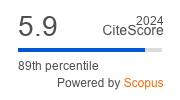Article | Open Access
Critically Contextualising a Mega-Event: Nordic Sports Commentaries During the 2022 World Cup in Football
| Views: | 1772 | | | Downloads: | 1384 |
Abstract: Prior to the FIFA 2022 World Cup, Nordic news media emphasised their ambitions of persistently covering problematic aspects of this mega-event to be hosted in Qatar, a country subjected to severe criticism of its human rights breaches in the build-up to the event. Focusing on the genre of commentary journalism—a form committed to articulating opinions on social and cultural issues—this study illuminates how key Nordic news media argued for their views on the World Cup 2022. Drawing on empirical material from Danish and Norwegian broadcasters and tabloids, the study analyses commentaries (excluding “sports only” commentaries) published during the event, highlighting the types of arguments, the discourses they articulate or imply, and their attribution of agency to organisational actors. Although a critical and contextualising argumentation runs through commentaries made during the tournament, the reasoning changes its character to such a degree that it is pertinent to categorise the commentaries as reflecting two distinct discursive phases. Argumentation in the first phase sustains a critique of FIFA and the organiser. Arguments were typically formulated as personal attacks but tended to elaborate on their premises by providing fact-based background from investigations of power abuse. The argumentation in the second phase changes its character by more clearly emphasising the action needed to transform current problematic circumstances in accordance with stated goals, not least a reformation of FIFA. The commentators now tend to be less moralising and more diverse and reflective in how they argue for changes in the governance of mega-events in football.
Keywords: FIFA; FIFA World Cup; mega-events; Nordic news media; political agency; sports commentaries; sportswashing
Published:
© Harald Hornmoen, Anders Graver Knudsen. This is an open access article distributed under the terms of the Creative Commons Attribution 4.0 license (http://creativecommons.org/licenses/by/4.0), which permits any use, distribution, and reproduction of the work without further permission provided the original author(s) and source are credited.


